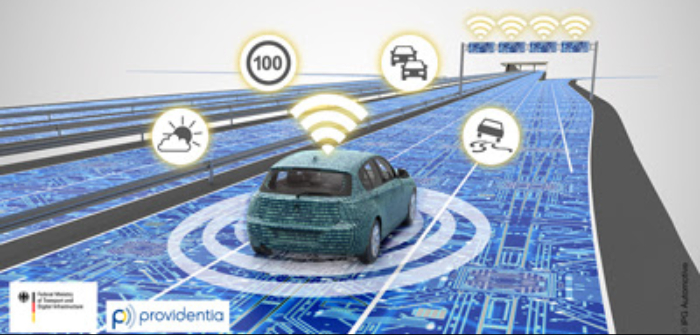IPG Automotive will be a key participant in a new project funded by the German Federal Ministry of Transport and Digital Infrastructure (BMVI), which will look at proactive video-based use of telecommunications technologies during driving, using sensors and big data.
The US$7.16m (€6.1m) project called Providentia will be conducted as part of the Research Programme on Automation and Connectivity in Road Transport within the funding guidelines for automated and connected driving on digital test beds in Germany. IPG Automotive will work in close collaboration with BMW Group, Cognition Factory, Elektrobit, fortiss, Huawei and Rohde & Schwarz.
The main aim of the project is to provide drivers and highly automated vehicles with a comprehensive view of the road ahead. Successful implementation requires a cellular network for data transfer and Car2X receivers, which process and transfer the relevant data. The ‘digital twin’ of the infrastructure is therefore always up-to-date and enables derivations of all relevant information for each vehicle in real time and under adverse weather conditions. For each individual road user, a highly reliable image of reality is generated in the backend via sensor fusion and made available, avoiding information overload at the same time.
“In addition to the traffic situation, real-time information on the weather can be provided, as well as suggestions for safe and comfortable driving adapted to the situation. At all times, the drivers themselves decide which information is displayed in the car. Warnings, however, are always issued,” explained Martin Herrmann, business development manager for ADAS and automated driving at IPG Automotive.
IPG’s CarMaker will provide important support. Using the software, on-road field tests on German highway A9 can be easily transferred to the virtual world. Real traffic situations and objects can be virtually modeled in real time, enabling accurate testing of the entire system in a virtual environment while taking uncertainties into account. If the interaction of sensors, Car2X components, and ADAS works in the scenarios, real-time visualization in the vehicle can then be tackled. Data obtained in the real world is then displayed on a laptop in the car, and the information supply of the connected vehicles is tested in actual traffic scenarios on the test track.
Providentia will take place until mid-2019. Once the required interaction of different information flows in highly automated vehicles and the communication and backend infrastructure on the section of the digital test bed on highway A9 succeeds, the live preview will be used to set up a sensor infrastructure with the end goal of introducing automated driving in Germany.
December 13, 2017


